Here are my algorithms for the last 5 pairs of Skwuction.
Start each algorithm with the top layer turned slightly clockwise, so that slice moves don't disturb pairs. (I called this "in alignment" in the video.)
The diagram shows what the top face looks like, as well as the bottom-front pair. Pairs with no arrows on them are connected.
| Name |
Diagram |
Algorithm |
Notes |
| Solved |
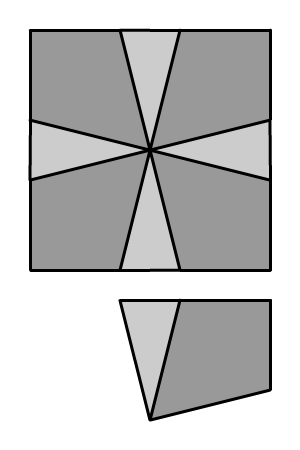 |
- |
Zero moves, yay. |
| Parity Fix (P) |
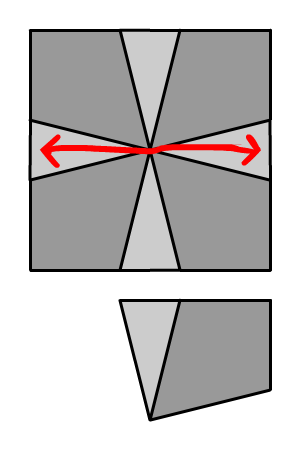 |
Starting with the cube in alignment (top layer twisted slightly clockwise): (0,-1)/(3,3)/(0,-5)/(-2,4)/(2,-4)/(0,-1)/(3,3) |
Credit goes to Jaap's Puzzle Page for this alg! Whenever you see P in an algorithm, do this. |
| Clockwise U-perm |
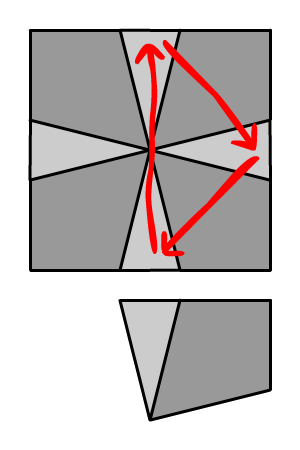 |
Submitted by Haxton: Top layer out of alignment, bottom layer in alignment, UB edge solved, /-3,0/3,3/0,-3/ or... Starting with the cube in alignment (top layer twisted slightly clockwise): (-1,0)/(0,-3)/(0,3)/(0,-3)/(0,3)/ or... (U2) | U | / U' | U | U / |
This algorithm can be used to solve all but 2-cycles of pairs using the technique I showed in the video. So technically, you only need this alg and the parity fix to solve it all! |
| Counter-clockwise U-perm |
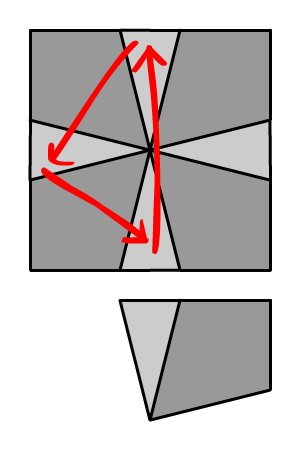 |
Submitted by Haxton: Top layer out of alignment, bottom layer in alignment, UB edge solved, /-3,-3/-2,1/2,-1/3,3/ or... | U / U' | U | U / |
Since corner edge pairs are not reflectively symmetrical, you can't just mirror the good U-perm to get the bad one. :( |
| Adjacent Swap |
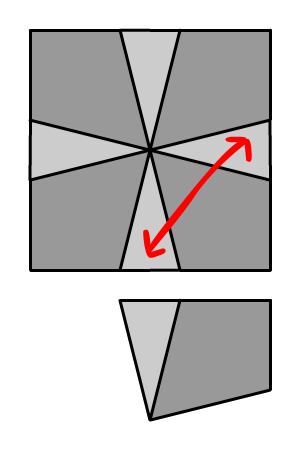 |
| U | P |
This is just a simple setup into the parity fix. |
| Z-perm |
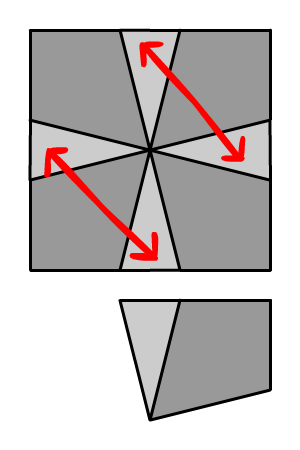 |
| U' D' | D / |
When mankind embarked on a journey to find the best speedcubing algorithm in existence, they discovered this. |
| H-perm |
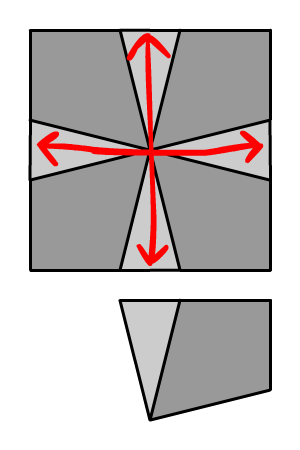 |
Starting with the cube in alignment (top layer twisted slightly clockwise): (-1,0)/(-3,0)/(3,0)/(-3,0)/(3,0)/ or... | U' D' | D' | D2 / |
This algorithm is also one of the best. |
| Clockwise O-perm |
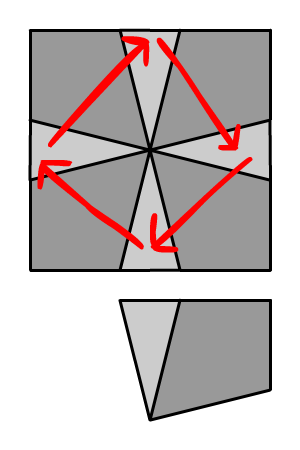 |
P | U' D' | D / |
This algorithm is just the parity fix mixed in with a Z-perm. |
| Counterclockwise O-perm |
 |
P | U' D' | D' / |
After learning the previous algorithm, this one should come super easily. |
| W-perm |
 |
Starting with the cube in alignment (top layer twisted slightly clockwise): /(0,2)/(-3,0)/(5,-2)/(4,-4)/(-2,2)/(1,-4)/(3,0)/(-1,0)/ or... U | U' D' | D' / U' P |
You save one slice by learning the top alg. Also, did you know the W-perm is twice as common as the two O-perms COMBINED? |
| Updown |
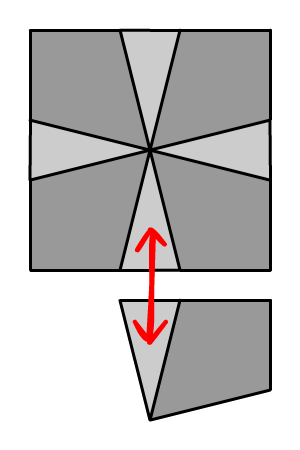 |
| U' P |
WE HAVE VENTURED into the cases where the bottom pair is not connected. This is the beginning of the "advanced" cases, I guess. Only 11 necessary ones though. |
| Updown Left |
 |
U | D | U / |
|
| Updown Right |
 |
D | D' | D / |
|
| Updown Across |
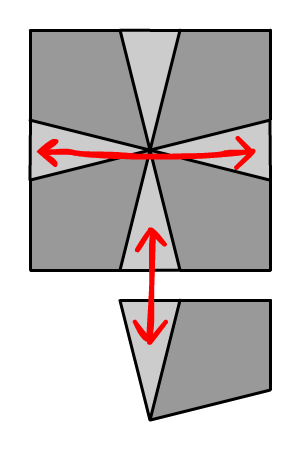 |
U' D | D' | D' / |
|
| Updown Clockwise |
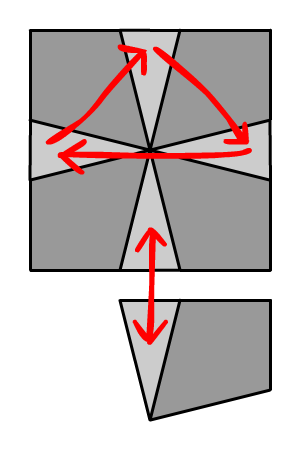 |
P D | D' | D / |
|
| Updown Counterclockwise |
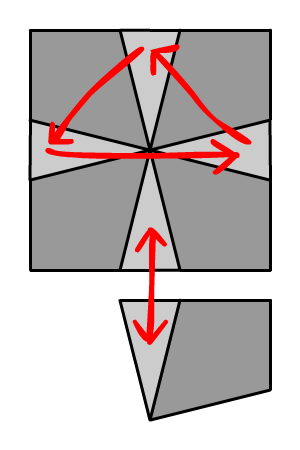 |
P U | D | U / |
|
| Simple Past |
 |
U | / U' | U | U / or... | U2 (clockwise U-perm) |
I didn't bother learning algorithms with an unsolved bottom pair and a solved top pair, because I could just put all the solved ones on the bottom and do a different case. So I don't really have a name for these. |
| Past |
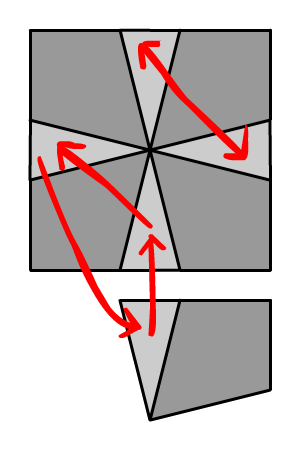 |
| U P U | D / |
I called this algorithm "past" because it helped me remember three algorithms. In the past, everything (the parity) was surrounded by fences ( | U P U | ) |
| Simple Present |
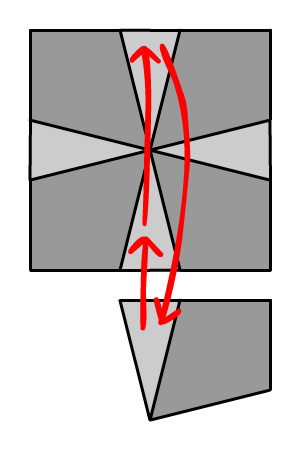 |
D' | D' / U' | D' | U / or... U' | U' | U' (clockwise U-perm) |
|
| Present |
 |
U P U / U | U' / |
By the present, we've been freed from the fences. And, we have alternating-stripe decorations on our technology ( / U | U' / ) |
| Simple Future |
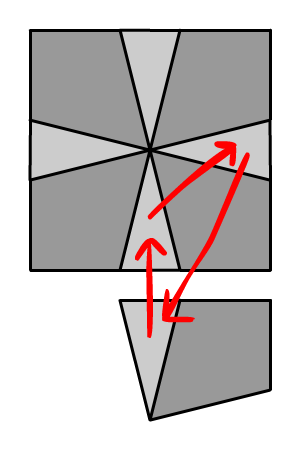 |
D2 | / U' | D | U / or... U' | U' | U (clockwise U-perm) |
|
| Future |
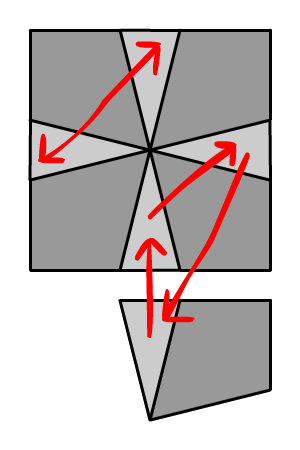 |
D U | P | D / |
In the future, there's an apocalypse, which is why we must use D moves, and any valuables (P) must be locked up tightly (| P |) so thieves don't steal them. |
| FrontLeftBack |
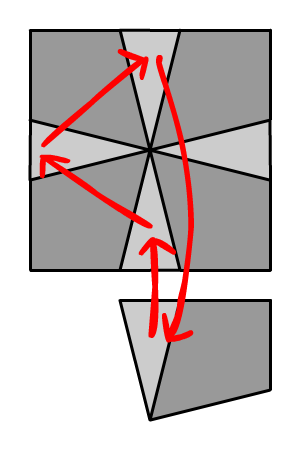 |
U P | D | U / |
|
| FrontLeftRight |
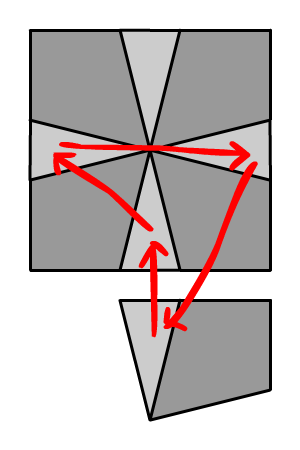 |
U2 | D | P U' / or... P | U2 (clockwise U-perm) |
|
| FrontBackLeft |
 |
U | D | P U / |
|
| FrontBackRight |
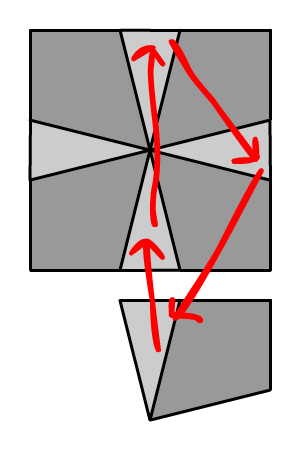 |
D | D U2 | P U' / |
|
| FrontRightLeft |
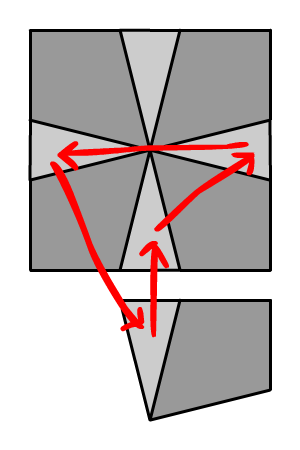 |
P U' / U' | U' | U / |
|
| FrontRightBack |
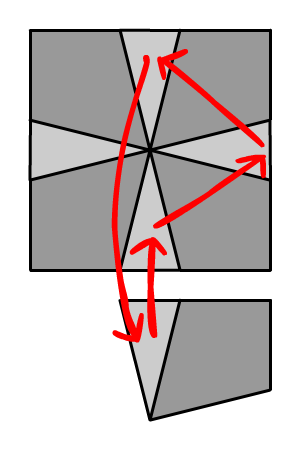 |
/ U' | U' | U / U' P |
|
| Clock |
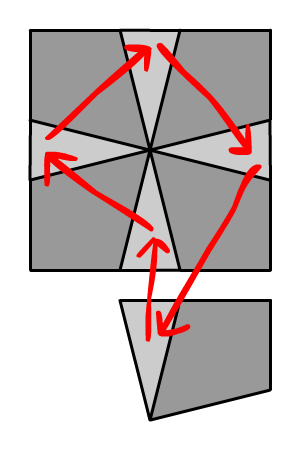 |
| U / | D' / U / U' / |
The clock ticks ( | U ). A rift in spacetime ruins the universe ( / | ). Because the universe is ruined, only / moves are allowed. The clock now ticks 12 (D'), 1 (U), and 2 (U') |
| Anticlock |
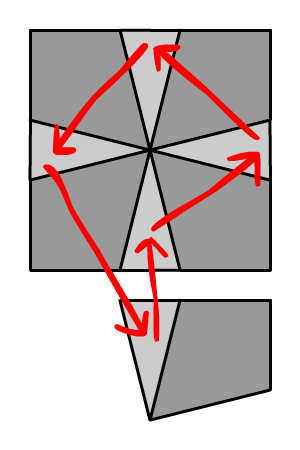 |
| D' / | U' | D' / U' / |
The anticlock antiticks ( | D' ). Again, a rift in spacetime ruins the universe ( / | ). The hero tries to resist being ruined ( U' | ), but fails. / moves take over once again. |
| Breast cancer, bad news |
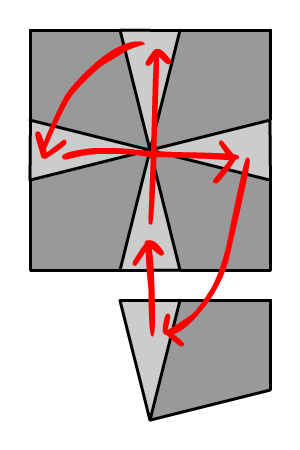 |
/ | D | D' | D' / U / |
I called these algorithms "breast cancer" because they look like those pink ribbons. So the doctor tells you bad news ( / | D ), and feels bad twice ( | D' | D' ). Ruined, you need some time to yourself to think ( / U / ). |
| Breast cancer, good news |
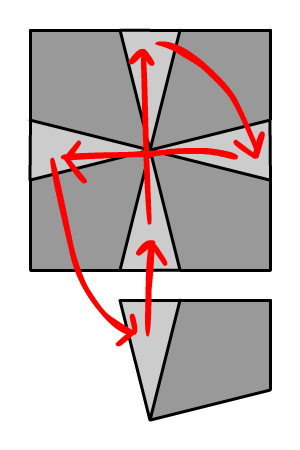 |
| / U' | D | U' / D' / |
You're going crazy with anxiety ( | / U' ). But then, the very stable doctor ( | D | ) tells you you're cured. You two dance crazily with happiness. ( U' / D' / ) |
| Lightning |
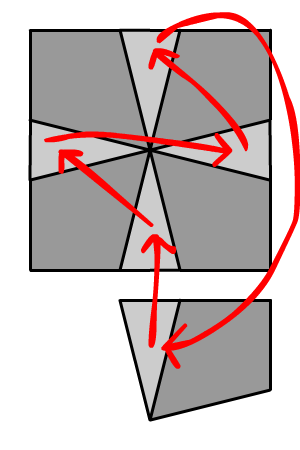 |
D' | D / U' / D | U / |
You're a babysitter telling the kids to go inside and shutting the door ( D' | ) because it's stormy. They sneak out anyway ( D / U' ). Clearly, you don't see things the same way ( / D | U / ). |
| Super lightning |
 |
U | / U' / U | U / |
Notice it looks like an S for super. You get zapped by lightning ( U | / ) and are first hurt ( U' ) but then you test out your new superpowers ( / U | U / ). |
| Pairings with 2 unsolved pairs on top. |
 |
|
Someday, I might add these. I just don't think they're that useful, since you can always get 3 pairs solved intuitively. |
If any of the algorithms are wrong, let me know by commenting on the video that's linked above.
As a few people pointed out, after reduction, you're essentially solving Square 0 (by DGCubes).


































